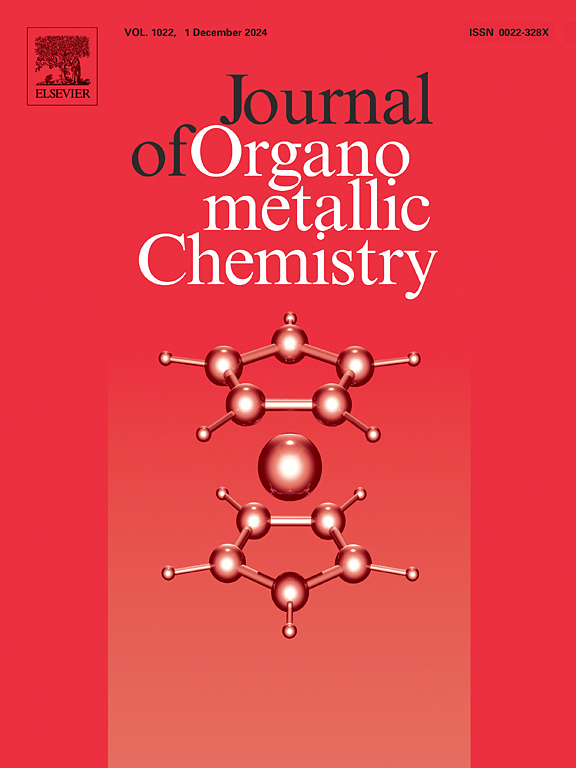Accessing Ir(III)-salen complexes based on Jacobsen’s salen ligand through Ir(IV) reduction: an alternative synthetic strategy
IF 2.1
3区 化学
Q3 CHEMISTRY, INORGANIC & NUCLEAR
引用次数: 0
Abstract
Jacobsen’s salen ligand L1 reacts with [Ir(Cod)Cl]2 to give a [IrIV(salen)L1(Cl)2] complex. By reductive ligand substitutions of this IrIV-salen complex using NHC-carbene and pyridine, two trans-IrIII-salen complexes were synthesized and structurally characterized by spectroscopic means and X-ray crystal analysis. Catalytic applications of these complexes toward intramolecular C–H amination of C(sp2)-H bonds are also evaluated.

通过Ir(IV)还原获得基于Jacobsen’s salen配体的Ir(III)-salen配合物:一种替代合成策略
Jacobsen’s salen配体L1与[Ir(Cod)Cl]2反应生成[IrIV(salen)L1(Cl)2]配合物。通过nhc -碳烯和吡啶的还原取代,合成了两个反式iriii -salen配合物,并通过光谱和x射线晶体分析对其结构进行了表征。还评价了这些配合物在C(sp2)-H键分子内C -H胺化反应中的催化应用。
本文章由计算机程序翻译,如有差异,请以英文原文为准。
求助全文
约1分钟内获得全文
求助全文
来源期刊

Journal of Organometallic Chemistry
化学-无机化学与核化学
CiteScore
4.40
自引率
8.70%
发文量
221
审稿时长
36 days
期刊介绍:
The Journal of Organometallic Chemistry targets original papers dealing with theoretical aspects, structural chemistry, synthesis, physical and chemical properties (including reaction mechanisms), and practical applications of organometallic compounds.
Organometallic compounds are defined as compounds that contain metal - carbon bonds. The term metal includes all alkali and alkaline earth metals, all transition metals and the lanthanides and actinides in the Periodic Table. Metalloids including the elements in Group 13 and the heavier members of the Groups 14 - 16 are also included. The term chemistry includes syntheses, characterizations and reaction chemistry of all such compounds. Research reports based on use of organometallic complexes in bioorganometallic chemistry, medicine, material sciences, homogeneous catalysis and energy conversion are also welcome.
The scope of the journal has been enlarged to encompass important research on organometallic complexes in bioorganometallic chemistry and material sciences, and of heavier main group elements in organometallic chemistry. The journal also publishes review articles, short communications and notes.
 求助内容:
求助内容: 应助结果提醒方式:
应助结果提醒方式:


